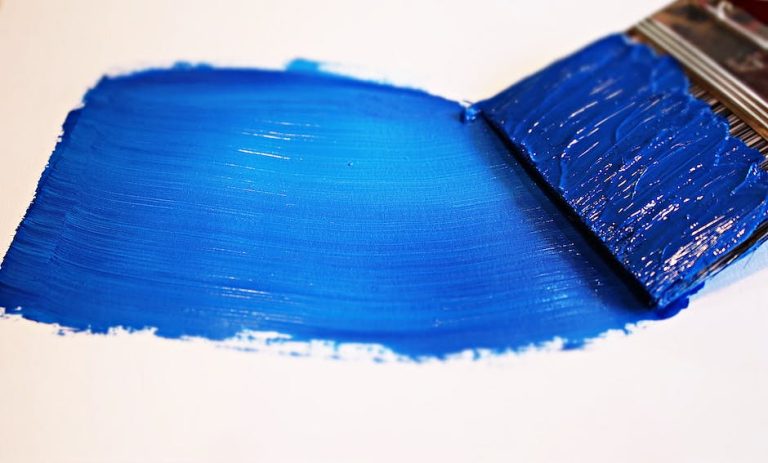Last Updated on June 5, 2024 by Asfa Rasheed
This blog post will teach you how to paint a wall like a pro! Whether you’re painting your living room or touching up the trim in your kitchen, we’ll show you everything you need to know. We’ll walk you through the materials you’ll need Paint Can Sizes, how to prepare your room, and the best techniques for painting the perfect wall.
The Materials You Will Need.
The type of paint you’ll need will depend on the surface you’re painting and the look you want to achieve. For most walls, a latex or acrylic paint will work fine. If your wall is in bad shape, though, you may need to use a primer before painting.
Paint brushes.
Paint brushes come in all shapes and sizes, so it’s important to choose one that’s appropriate for the job at hand. For large surfaces, like walls, a 2-3 inch brush is typically best. For smaller projects, like trim or touch-ups, a smaller brush will do the trick.
Roller.
A roller is another option for painting large surfaces quickly and efficiently. Unlike a brush, a roller doesn’t require as much precision, making it a good choice for beginners or those working in tight spaces.
Paint tray.
A paint tray is necessary for holding both paint and brushes (or rollers). It’s important to choose a tray that’s appropriately sized for the project – too small and you’ll be constantly refillings; too large and the paint will dry out before you can use it all.
Tape.
Tape is optional but can be helpful in creating clean lines or protecting adjacent surfaces from paint splatter. If you choose to use tape, be sure to select one that’s made for painting (often labeled as “low-tack” or “blue painter’s tape”).
Preparing the Room.
In order to paint a wall, you will need to remove all of the furniture from the room. This includes any chairs, tables, couches, etc. that may be in the way. You don’t want to accidentally get paint on your furniture!
Covering the floors.
Now that the furniture is out of the way, you will need to cover the floors. This is to protect them from any paint that might drip or splatter while you’re painting. You can use old newspapers, plastic sheeting, or drop cloths for this purpose.
Protecting the trim.
The next step is to protect the trim around the walls – such as baseboards, moldings, and door frames – from paint splatters. You can do this by using painters’ tape to create a barrier between the trim and the wall surface.
Painting the Walls.
Cutting in is the process of painting the areas around the edges of the walls, where the roller can’t reach. To cut in, load your brush with paint and tap it off on the edge of the paint can. Then, holding the brush at a 45-degree angle, start at one corner of the wall and paint a two- to three-inch strip along the edge. Move down the wall, continuing to paint strips until you reach the other corner.
Rolling the Paint.
Rolling is how you’ll apply most of the paint to the walls. To start, pour some paint into your paint tray (not too much—you can always pour more if you need it). Dip your roller into the paint, roll it off on the edge of the tray, and then apply it to the wall in a W-shaped pattern. Start at one end of the wall and work your way down, Reloading your roller as needed.
Touching Up.
Once you’ve rolled all of the paint onto the walls, go back and touch up any areas that you may have missed or that need a second coat. This is also a good time to fix any drips or uneven areas. To touch up, simply load your brush with paint and lightly brush over any areas that need attention.
Cleaning Up.
Wipe up any paint drips on the walls with a damp cloth. If the paint is still wet, you can use a putty knife to scrape it off. If the paint has already dried, you’ll need to sand it off.
Cleaning the paint brushes.
Paint brushes can be cleaned with soap and water. Rinse the brush well and then add some dish soap to the bristles. Use your fingers to work the soap into the brush and then rinse it again. Repeat this process until the water runs clear. Set the brush out to dry on a paper towel or rack.
Cleaning the roller.
Rollers can be cleaned with soap and water as well. Rinse the roller well and then add some dish soap to the roller cover. Use your fingers to work the soap into the roller and then rinse it again. Repeat this process until the water runs clear. Set the roller out to dry on a paper towel or rack.
Cleaning up the paint tray.
Paint trays can be cleaned with soap and water as well. Rinse out the tray well and then add some dish soap to it . Use a sponge or brush to scrub away any paint residue . Rinse out the tray again and set it out to dry .
Removing th e tape .
Remove painter’s tape while t he paint is still wet by peeling i t off at a 45-degree angle . If th e pain t has already dried , use a utility knife or razor blade to score along th e edge of th e tape . Then, slowly peel back th e tape .
Let the Paint Dry.
Once you have finished painting your walls, it is important to let the paint dry completely before moving on to the next step. Depending on the type of paint you are using, this can take anywhere from a few hours to a few days.
If you try to rush the process by painting over wet paint, you will end up with an uneven finish and streaks in your paint job. To avoid this, make sure to give your paint plenty of time to dry before moving on.
If possible, open up any windows in the room to help speed up the drying process. You can also use fans or dehumidifiers to circulate the air and help the paint dry more quickly.
Once the paint is dry, you can proceed to the next step in your project.
Conclusion
After reading this blog post, you should now know how to paint a wall like a pro! Always make sure to remove furniture from the room before starting, cover your floors, and protect any trim. Cut in around the edges of the wall before rolling on the paint, and touch up as needed. Finally, clean up your materials and let the paint dry completely before putting everything back in the room. With these tips in mind, you’ll be able to achieve a great-looking paint job that will last for years to come!

